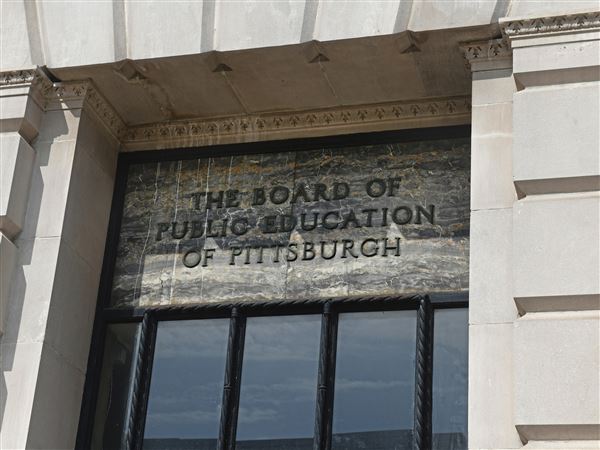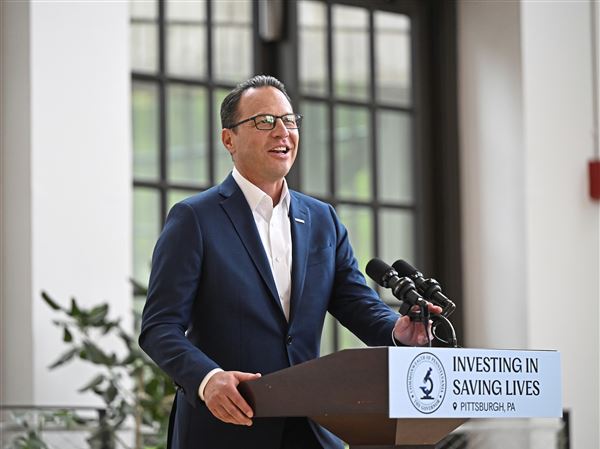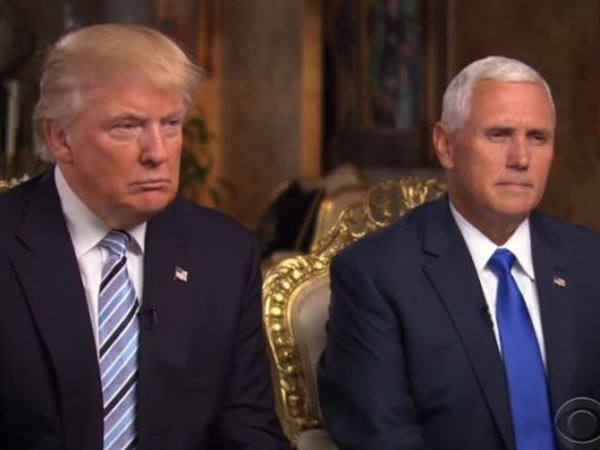This is an excerpt from "Top Secret America: The Rise of the New American Security State," published this month by Little, Brown.
The CIA's armed drones and paramilitary forces have killed dozens of al-Qaida leaders and thousands of its foot soldiers. But there is another mysterious organization that has killed even more U.S. enemies in the decade since the 9/11 attacks.
CIA operatives have imprisoned and interrogated nearly 100 suspected terrorists in their former secret prisons around the world, but troops from this other secret organization have imprisoned and interrogated 10 times as many, holding them in jails that it alone controls in Iraq and Afghanistan.
Since the Sept. 11, 2001, attacks, this secretive group of men (and a few women) has grown tenfold, while sustaining a level of obscurity not even the CIA managed. "We're the dark matter. We're the force that orders the universe but can't be seen," a Navy SEAL, speaking on condition of anonymity, said in describing his unit.
The SEALs are just part of the U.S. military's Joint Special Operations Command -- known by the acronym JSOC -- which has grown from a rarely used hostage rescue team into America's secret army. When members of this elite force killed Osama bin Laden in Pakistan in May, JSOC leaders celebrated not just the success of the mission but also how few people knew their command, based in Fayetteville, N.C., even existed.
JSOC's core includes Navy SEAL Team 6, the Army's Delta Force, the Air Force's 24th Special Tactics Squadron and the Army's 160th Special Operations Aviation Regiment and the 75th Ranger Regiment.
Two presidents and three secretaries of defense routinely have asked JSOC to mount intelligence-gathering missions and lethal raids, mainly in Iraq and Afghanistan, but also in nations with which the United States was not at war, including Yemen, Pakistan, Somalia, the Philippines, Nigeria and Syria.
"The CIA doesn't have the size or the authority to do some of the things we can do," one JSOC operator said.
The president has also given JSOC the rare authority to select individuals for its kill list -- and then to kill, rather than capture, them. Critics charge that this individual man-hunting mission amounts to assassination, a practice prohibited by U.S. law. JSOC's list is not usually coordinated with the CIA, which maintains a similar, but shorter, roster of names.
Created in 1980 but reinvented in recent years, JSOC has grown from 1,800 troops prior to 9/11 to as many as 25,000, a number that fluctuates with its mission. It has its own intelligence division, drones, reconnaissance planes, even dedicated satellites. It also has its own cyberwarriors, who, on Sept. 11, 2008, shut down every jihadist website they knew.
Obscurity has been one of the unit's hallmarks. When JSOC officers are working in civilian government agencies or U.S. embassies abroad, as they often do, they dispense with uniforms, unlike other military comrades. In combat, they wear no name or rank identifiers. They have hidden behind nicknames: the Secret Army of Northern Virginia, Task Force Green, Task Force 11, Task Force 121. JSOC leaders almost never speak in public. They have no unclassified website.
Despite the secrecy, JSOC is not permitted to carry out covert action like the CIA. Covert action, in which the U.S. role is kept hidden, requires a presidential finding and congressional notification. But many national security officials say JSOC's operations are so similar to the CIA's that they amount to covert action. The unit takes its orders directly from the president or defense secretary and is managed and overseen by a military-only chain of command.
Under President George W. Bush, JSOC operations were rarely briefed to Congress in advance -- and usually not afterward either -- because government lawyers saw them as "traditional military activities" not requiring such notification. President Barack Obama has taken the same legal view, but he has insisted that JSOC's sensitive missions be briefed to select congressional leaders.
JSOC's first mission in 1980, Operation Eagle Claw, an attempted rescue of diplomats held hostage by Iranian students at the U.S. Embassy in Tehran, ended in a desert helicopter collision and the deaths of eight team members. The unit's extreme secrecy also made conventional military commanders distrustful, and, as a consequence, it was rarely used during conflicts.
Defense Secretary Donald Rumsfeld, smarting from the CIA's ability to move first into Afghanistan and frustrated by the Army's slowness, pumped new life into the organization.
The JSOC's lethality was demonstrated in the December 2001 Tora Bora mountain battle. While bin Laden and many followers eventually escaped across the border into Pakistan, an Army history said the JSOC killed so many enemy forces the nights of Dec. 13 and 14 that "dead bodies of al-Qaida fighters were carted off the field the next day" by the truckload.
It also made mistakes. On July 1, 2002, in what the Rand Corp. labeled "the single most serious errant attack of the entire war," a JSOC reconnaissance team hunting Taliban came under attack, and an AC-130 gunship fired upon six sites in the village of Kakarak. Estimates of civilian deaths ranged from 48 to hundreds. The "wedding party incident," as it became known because that was among the targets accidentally hit, convinced many Afghans that U.S. forces disregarded the lives of civilians.
Nevertheless, on Sept. 16, 2003, Mr. Rumsfeld signed an executive order cementing JSOC as the center of the counterterrorism universe. It listed 15 nations and the activities permitted under various scenarios, and it gave the preapprovals required to carry them out.
In Iraq and Afghanistan, lethal action against al-Qaida was granted without additional approval. In the other countries -- among them, Algeria, Iran, Malaysia, Mali, Nigeria, Pakistan, the Philippines, Somalia and Syria -- JSOC forces needed tacit approval from the country or at least a sign-off from higher up the U.S. chain of command.
In the fall of 2003, JSOC got a new commander who would turn the organization into arguably the U.S. counterterrorism arsenal's most effective weapon.
From his perch as vice director of operations on the Joint Staff, Brig. Gen. Stanley McChrystal had come to believe there was an aversion to decision-making at the top of government. Any one of a multitude of agencies could stifle action until it was too late.
Gen. McChrystal believed that he had "to slip out of the grip" of Washington's suffocating bureaucracy, he told associates. He moved his headquarters to Balad Air Base, 45 miles northeast of Baghdad, and worked in a concrete airplane hangar with three connecting command centers: one to fight al-Qaida's affiliate in Iraq, one to fight its Shiite extremists and a third for himself, so he could oversee all operations.
He coaxed the other intelligence agencies to help him out -- the CIA presence grew to 100; the FBI and National Security Agency, or NSA, to a combined 80. He won their loyalty by exposing his operation's guts to all involved. "The more people you shared your problem with, the better you'd do in solving it," he would say.
Gen. McChrystal installed a simple, PC-based common desktop and portal where troops could post documents, conduct chats, tap into intelligence on any target -- pictures, biometrics, transcripts, intelligence reports -- and follow commanders' message traffic amidst operations. Then he gave access to JSOC's bureaucratic rivals: the CIA, NSA, FBI and others.
He also salted each national security agency with his top commandos. He deployed 75 officers to Washington agencies and 100 more around the world. They rotated every four months, so none would get disconnected from combat. Some saw the liaisons as spies for an organization already too important. But such suspicions did little to derail JSOC or Gen. McChrystal.
Iraqi insurgents' reliance on modern technology gave tech-savvy JSOC and its partners, especially the NSA, an advantage. The NSA learned to locate all electronic signals in Iraq.
One innovation was called the Electronic Divining Rod, a sensor commandos wore that could detect a particular cellphone's location. The beeping grew louder as a soldier with the device got closer to the person carrying a targeted phone.
Killing the enemy was the easy part, JSOC commanders said; finding him was harder. But thanks to Roy Apseloff, director of the National Media Exploitation Center, the U.S. government's agency for analyzing documents captured by the military and intelligence community, JSOC's intelligence collection improved dramatically.
Mr. Apseloff offered to lend his small staff, based in Fairfax, Va., to Gen. McChrystal to examine items captured in raids. Mr. Apseloff's team downloaded the contents of thumb drives, cellphones and locked or damaged computers to extract names, phone numbers, messages and images. Then they processed and stored that data, linking it to other information that might help analysts find not just one more bad guy, but an entire network of them.
The major challenge was how to find the gems in the trash quickly enough to be useful. The key was more bandwidth, the electronic pipeline carrying information such as e-mail and phone calls around the world. Luckily for the military and JSOC, the 2001 attacks coincided with an unrelated development: the dot-com bust. It created a glut in commercial satellite capacity, and the military bought up much of it.
Within a year after Gen. McChrystal's arrival, JSOC had linked 65 stations around the globe to enable viewers to participate in twice-daily, 45-minute video teleconferences he held. By 2006, JSOC had increased its bandwidth capability by 100 times in three years, according to senior leaders.
The other challenge JSOC faced was a human one: Ill-trained interrogators had little information on individual detainees and didn't know what questions to ask or how to effectively ask them. Worse, some members of the JSOC's Task Force 121 were beating prisoners.
Eventually, 34 JSOC task force soldiers were disciplined in five cases over a one-year period beginning in 2003. Gen. McChrystal ordered his intelligence chief, Michael Flynn, to professionalize the interrogation system.
By the summer of 2005, JSOC's interrogation booths at Balad sat around the corner from the large warren of rooms where specialists mined thumb drives, computers, cellphones, documents to use during interrogations. Paper maps were torn down from the walls and replaced with flat-panel screens and sophisticated computerized maps. Detainees willing to cooperate were taught how to use a mouse to fly around their virtual neighborhoods to help identify potential targets.
The new interrogation system also included an FBI and judicial team that collected evidence needed for trial by the Iraqi Central Criminal Court in Baghdad. From early 2005 to early 2007, the teams sent more than 2,000 individuals to trial, said senior military officials.
By the spring of 2006, using the expanded bandwidth and constant surveillance by unmanned aircraft, JSOC executed a series of raids, known as Operation Arcadia, in which it collected and analyzed 662 hours of full-motion video shot over 17 days. The raid netted 92 compact discs and barrels full of documents, leading to another round of raids at 14 sites.
Those hits yielded hard drives, thumb drives and a basement stacked with 704 compact discs, including copies of a sophisticated al-Qaida marketing campaign. Operation Arcadia led, on June 7, 2006, to the death of the al-Qaida leader in Iraq, Abu Musab al-Zarqawi, when JSOC directed an airstrike that killed him.
JSOC's lethality was evident in its body counts: In 2008, in Afghanistan alone, JSOC commandos struck 550 targets and killed roughly a thousand people, officials said. In 2009, they executed 464 operations and killed 400 to 500 enemy forces. As Iraq descended into chaos in the summer of 2005, JSOC conducted 300 raids a month. More than 50 percent of JSOC Army Delta Force commandos have Purple Hearts.
But no war in modern times is ever won simply by killing enough of the enemy. Even in an era of precision weaponry, accidents happen that create huge political setbacks. Every JSOC raid that wounded or killed civilians, destroyed a home or someone's livelihood became a grievance so deep that the counterproductive effects, still unfolding, are difficult to calculate.
JSOC's success in targeting the right homes, businesses and individuals was only ever about 50 percent, according to two senior commanders. They considered this rate a good one.
"Sometimes our actions were counterproductive," Gen. McChrystal said in an interview. "We would say, 'We need to go in and kill this guy,' but just the effects of our kinetic action did something negative, and they [the conventional forces in much of the country] were left to clean up the mess."
When President Barack Obama came into office, he cottoned to the organization immediately. (It didn't hurt that his CIA director, Leon Panetta, has a son who, as a naval reservist, had deployed with JSOC.) Soon Mr. Obama was using JSOC even more than his predecessor. In 2010, for example, he secretly directed JSOC troops to Yemen to kill leaders of al-Qaida in the Arabian Peninsula. The Arab Spring forced the White House to delay some JSOC missions.
Meantime, the organization is busy with its new 30,000-square-foot office building turned command center, across the highway from the Pentagon.
JSOC's National Capital task force is creating targeting packages for U.S. domestic agencies that have sought its help, including the U.S. Immigration and Customs Enforcement agency, the second-largest federal law enforcement agency and the latest to seek a larger U.S. counterterrorism role.
First Published: September 8, 2011, 8:00 a.m.















